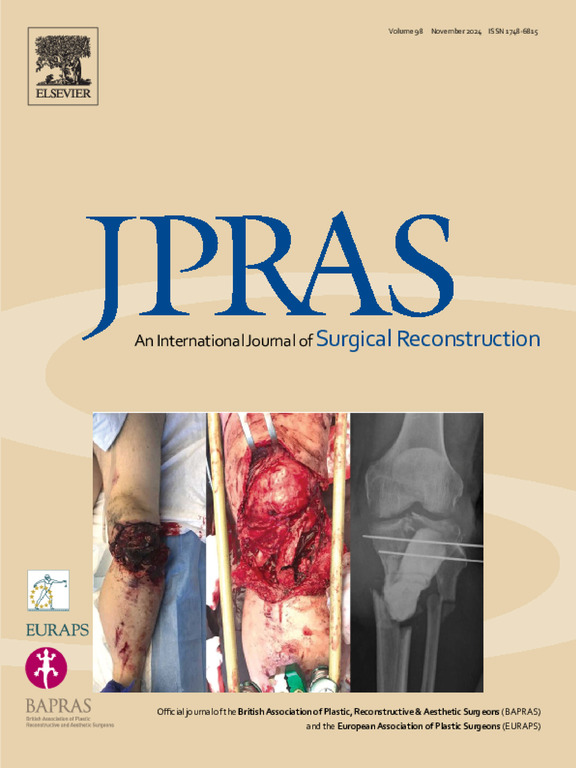A six-year retrospective study of patient outcomes following involved or close margin basal cell carcinoma excision
IF 2
3区 医学
Q2 SURGERY
Journal of Plastic Reconstructive and Aesthetic Surgery
Pub Date : 2025-03-05
DOI:10.1016/j.bjps.2025.03.004
引用次数: 0
Abstract
Introduction
This study aimed to analyse patient management and outcomes following involved or close margin basal cell carcinoma (BCC) excision to investigate what factors influence the risk of involved and close margin excision and contribute to recurrence.
Methods
Histology reports identifying BCCs at Cambridge University Hospital from 2015 to 2021 were collected. After applying exclusion criteria, patient notes were analysed, looking at multiple variables in their clinical details and treatment pathway.
Results
A total of 160 involved margins, and 500 close-margin BCCs were included. In total, 53% of involved margin BCCs compared with 37% of close-margin BCCs showed a high-risk histological component. The rate of perineural invasion differed significantly (p < 0.001) with a rate of 12.5% and 2.9% in the involved and close-margin groups, respectively. Following an involved margin excision, 36% underwent re-excision and 28% received clinic follow-up. Following a close margin excision, however, only 6.7% underwent re-excision, with 24% receiving follow-up and 65% being discharged. Three involved margins and four close-margin BCCs developed recurrence; none of these lesions received active further management following primary excision.
Conclusions
Despite being the most common skin cancer worldwide, it is worth discussing if the common active follow-up approach for close margin BCCs should be revised to optimise available recourses. There is evidence that patient education on self-examination and self-referral for some conditions could be as effective as monitoring by healthcare professionals. However, our observation of no recurrences in those who received further treatment suggests that further active management may improve patient outcomes.
求助全文
约1分钟内获得全文
求助全文
来源期刊
CiteScore
3.10
自引率
11.10%
发文量
578
审稿时长
3.5 months
期刊介绍:
JPRAS An International Journal of Surgical Reconstruction is one of the world''s leading international journals, covering all the reconstructive and aesthetic aspects of plastic surgery.
The journal presents the latest surgical procedures with audit and outcome studies of new and established techniques in plastic surgery including: cleft lip and palate and other heads and neck surgery, hand surgery, lower limb trauma, burns, skin cancer, breast surgery and aesthetic surgery.

 求助内容:
求助内容: 应助结果提醒方式:
应助结果提醒方式:


